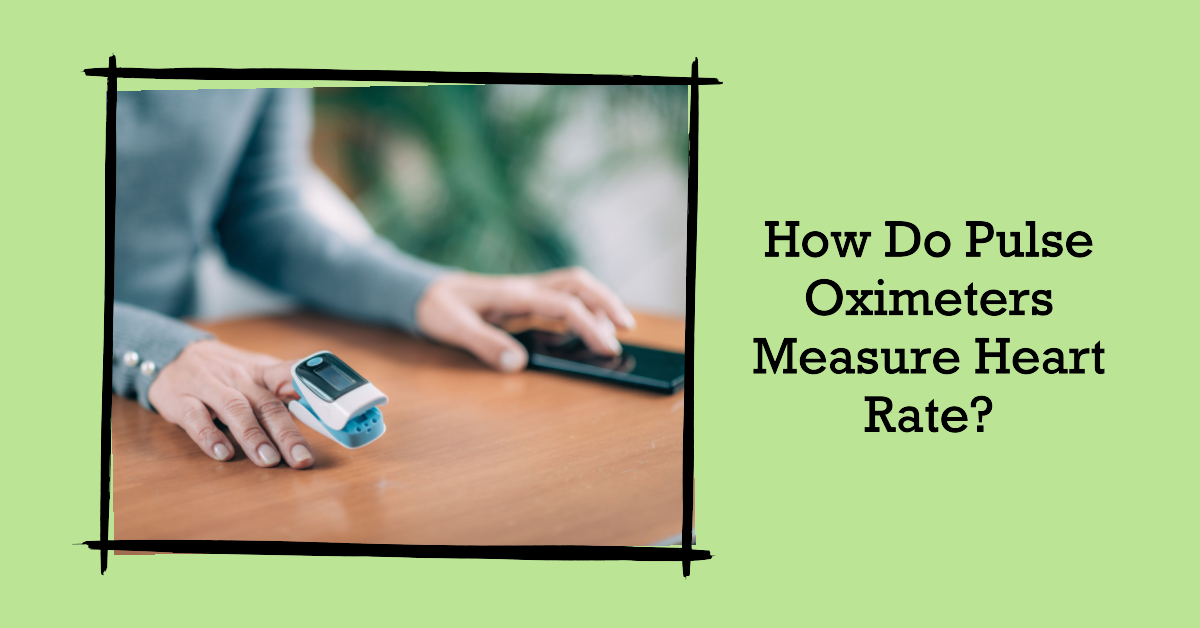
Welcome to our comprehensive guide on How Do Pulse Oximeters Measure Heart Rate. At HealthisSanity, we are dedicated to providing you with valuable information to help you understand various health-related topics.
In this article, we will delve into the world of pulse oximetry, a non-invasive medical technique used to measure oxygen levels in your blood. We will explore how it works, its applications, and the benefits it offers in maintaining your overall well-being and the main question “How Do Pulse Oximeters Measure Heart Rate”.
Understanding Pulse Oximetry: The Importance of Pulse Oximetry in Monitoring Your Health

In pulse oximetry, small beams of light are transmitted through your finger or earlobe. These beams pass through your blood vessels, and the device measures the amount of oxygen carried by your red blood cells.
By analyzing the data collected, healthcare professionals gain insights into your oxygen saturation levels, which is the percentage of oxygenated hemoglobin in your blood.
How Does Pulse Oximetry Work And How Do Pulse Oximeters Measure Heart Rate?
Pulse oximeters work based on the principle of spectrophotometry, where light is used to analyze the composition of substances. The device emits two different wavelengths of light, usually red and infrared.
Oxygenated hemoglobin absorbs more infrared light, while deoxygenated hemoglobin absorbs more red light. By comparing the absorption of these two wavelengths, the pulse oximeter calculates your oxygen saturation levels.
Applications of Pulse Oximetry
1. Respiratory Conditions
Pulse oximetry is commonly used in the diagnosis and management of respiratory conditions, such as chronic obstructive pulmonary disease (COPD), asthma, and pneumonia. By regularly monitoring your oxygen saturation levels, healthcare professionals can assess the effectiveness of your treatment plan and make necessary adjustments.
2. Sleep Disorders
Sleep apnea, a sleep disorder characterized by pauses in breathing, can be detected and monitored using pulse oximetry. Overnight pulse oximetry recordings help identify episodes of oxygen desaturation during sleep, aiding in the diagnosis and treatment of sleep-related breathing disorders.
3. Cardiac Health
Pulse oximetry plays a crucial role in monitoring cardiac health, particularly during cardiac surgeries and procedures. It helps assess the effectiveness of oxygenation and detects any potential complications in real time, enabling prompt intervention.
4. Physical Activity and Altitude
For individuals involved in physical activities or residing in high-altitude areas, pulse oximetry provides valuable information about oxygen levels in their blood. This data helps gauge their endurance levels, adapt to higher altitudes, and prevent altitude-related illnesses.
5. COVID-19 Monitoring
During the COVID-19 pandemic, pulse oximeters gained significant attention as a tool for monitoring individuals with mild to moderate symptoms. They can help identify early signs of hypoxia, a dangerous condition where oxygen levels in the blood become dangerously low, allowing for timely medical intervention.
Benefits of Pulse Oximetry
1. Early Detection of Hypoxemia
Hypoxemia, a condition characterized by low blood oxygen levels, can have severe consequences if left undetected. Pulse oximetry enables the early identification of hypoxemia, ensuring timely medical intervention and potentially preventing further complications.
2. Non-Invasive and Painless
Pulse oximetry is a non-invasive and painless procedure that can be performed quickly and easily. It involves simply attaching the device to your finger or earlobe, making it suitable for individuals of all ages, including children and the elderly.
3. Continuous Monitoring
Pulse oximeters are designed to provide continuous monitoring of your oxygen saturation levels. This feature is particularly valuable for individuals with chronic respiratory conditions, as it allows healthcare professionals to closely track their progress and adjust treatment plans accordingly.
4. Portable and User-Friendly
Modern pulse oximeters are compact, portable devices that can be easily carried around. They are user-friendly and often equipped with intuitive displays, making them accessible for self-monitoring at home or on the go.
5. Cost-Effective
Pulse oximeters have become increasingly affordable, making them a cost-effective option for both healthcare professionals and individuals seeking to monitor their oxygen levels regularly. This accessibility has contributed to their widespread use and adoption in various healthcare settings.
Conclusion: How Do Pulse Oximeters Measure Heart Rate
Pulse oximetry is an invaluable tool in monitoring your health and ensuring your well-being. Its non-invasive nature, ease of use, and ability to provide real-time data make it an essential device in a wide range of healthcare settings. From diagnosing respiratory conditions to monitoring sleep disorders and cardiac health, pulse oximeters play a vital role in maintaining optimal oxygen levels in your blood. By understanding the benefits and applications of pulse oximetry, you can take proactive steps to prioritize your health and well-being.
Please note that the article above is for informational purposes only and should not replace professional medical advice. Always consult a healthcare professional for personalized guidance and recommendations.





